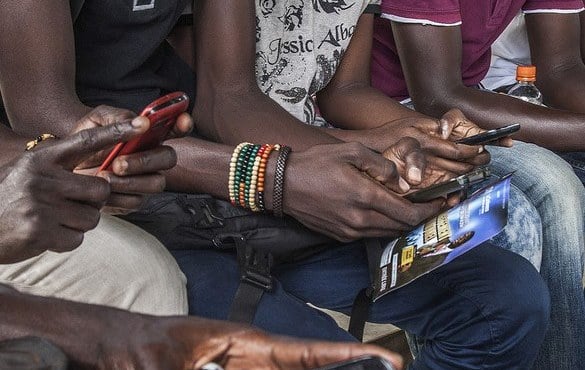What’s in store for global smartphone sales? How much are Kenyans spending via mobile money? Why don’t Brit shoppers trust contactless?
You’ll find the answers to these and many more mobile data related questions in this week’s MEF market stats round up…

Kenyans transact $30m a day via mobile money
Statistics from by the Communications Authority of Kenya show continuing growth in the value of money flowing across on M-Pesa, Airtel Money, Orange Money, Equitel and Mobikash.
Kenyans transacted $300m in the second quarter (Sh290 billion) – that’s $30m a day. Needless to say Safaricom’s M-Pesa accounted for most of the market: 92 per cent of the value exchanged.
The value of transactions through Airtel Money and Mobikash was Sh4.3 billion and Sh1.1 billion, respectively. Orange Money users paid and received Sh65 million.
Global smartphone sales will hit 2bn in 2020
Strong demand from countries in Asia-Pacific and Africa will more than double annual smartphone sales in the next four years.
CCS Insight predicts sales will be one billion this year, and over two billion by 2020. That will increase the total number of smartphone users from 3.1 billion to 5.4 billion in the same period.
According to the study, India and Asia-Pacific users will buy 220 million smartphones this year, while Africans will buy 85 million.
4G shipments in 2016 will be 900 million, with 4G shipments tripling from 93 million to 317 million. CCS expects LTE-capable devices to account for 72 per cent of the market by 2020.
CCS smart devices analyst Jasdeep Badyal said: “Despite a popular misconception that mobile phone growth has ceased, there remains a huge market opportunity. Adoption of new technology is also being boosted as users upgrade to increasingly affordable LTE-capable smartphones.”
Read more…
In-app native advertising to generate two-thirds of mobile display revenue by 2020
Mobile display ads are going native, and will generate $53 billion in total advertiser spend by the end of the decade.
This is the key finding of a study authored by global IHS Technology and commissioned by Facebook’s Audience Network.
IHS interviewed senior execs in 25 countries and concluded that while first party in-app native (the ads you see on Facebook or Instagram) will be the main native revenue driver, third party in-app native (operated and served by a third party like Facebook’s Audience Network) will be the fastest-growing.
The latter is expected to grow at 70.7 per cent a year – that’s 10.6 per cent of all mobile display ads ($8.9 billion) by 2020.
On Facebook, the percentage of apps using native ad formats on the Audience Network has grown 10x from Q1 2015, and is now 83 per cent of the network.
IHS defines native advertising as ‘a format that takes advantage of the form and function of the surrounding user experiences, all of which are indigenous to the wide variety of mobile devices’.
App market revenue set to triple in just five years
There was a time when some experts wondered whether apps were a passing fad. Not any more.
A new report by Zion Research says the app market was valued at $17.24 billion in 2014, but it will be worth 52.96 billion in 2020.
Unsurprisingly, games games and entertainment contribute the largest market segment – 40 per cent – and this will remain. Geographically, North America is the biggest region, with a 34 per cent share in 2014.
31 per cent of UK consumers do not trust contactless payment
Confusion and distrust still linger around contactless tech, a study by business consultant Future Thinking has revealed.
It found that, despite the fact that over one billion contactless transactions were made in 2015, nearly one in three UK shoppers do not trust the tech.
Age plays a part: 22 per cent of under 35s don’t trust contactless, compared to 43 per cent of over 55s.
“It is clear from recent figures that there has been a huge increase in the number of purchases using contactless technology,” said Noreen Kinsey, senior research director at Future Thinking. “This reflects consumer desires for quicker payment methods and increased convenience.









